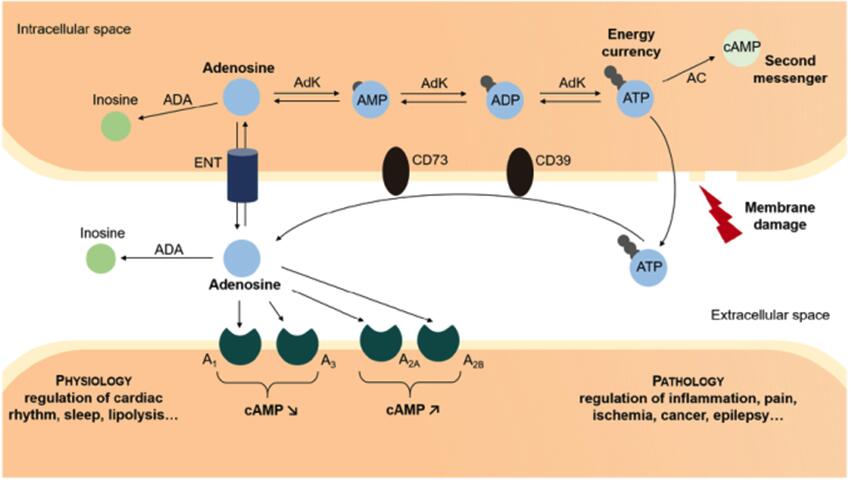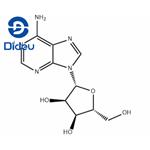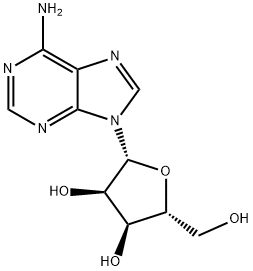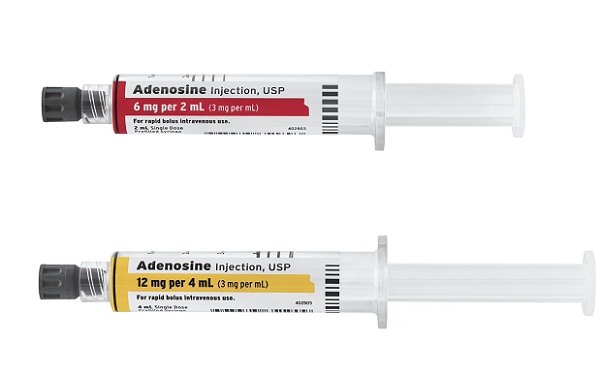Application and Pharmacology of Adenosine
General description
Adenosine is a ribonucleoside comprised of adenine bound to ribose, with vasodilatory, antiarrhythmic and analgesic activities. Phosphorylated forms of adenosine play roles in cellular energy transfer, signal transduction and the synthesis of RNA. Adenosine is a ribonucleoside composed of a molecule of adenine attached to a ribofuranose moiety via a beta-N(9)-glycosidic bond. It has a role as an anti-arrhythmia drug, a vasodilator agent, an analgesic, a human metabolite and a fundamental metabolite. It is a purines D-ribonucleoside and a member of adenosines. It derives from an adenine. The structure of adenosine was first described in 1931, though the vasodilating effects were not described in literature until the 1940s. Adenosine is indicated as an adjunct to thallium-201 in myocardial perfusion scintigraphy, though it is rarely used in this indication, having largely been replaced by [dipyridamole] and [regadenson]. Adenosine is also indicated in the treatment of supraventricular tachycardia. Adenosine was granted FDA approval on 30 October 1989. Appearance: white crystalline powder solubility: easily soluble in water, almost insoluble in ethanol and ether. Adenosine is a hydrophilic molecule that has no affinity with lipids.
Application and Pharmacology
Adenosine is not just a major component of adenine nucleotides and ribonucleic acids, but also has its own signaling functions, crucial in many biochemical processes: this ubiquitous nucleoside serves as an essential building block of RNA, is also a component of ATP and regulates numerous pathophysiological mechanisms via binding to four extracellular receptors. ExtraceIlular level of adenosine in an organism is strictly maintained through the balance between its formation, degradation and transport. Adenosine is formed by enzymatic degradation of adenosine triphosphate and eliminated by phosphorylation to adenosine monophosphate or by deamination to inosine. Transport of adenosine across the cell membrane is ensured by equilibrative and concentrative nucleoside transporters. All these processes participate in maintenance of adenosine level under normal conditions, but a balanced equilibrium can be disrupted in some pathophysiological situations. Extracellular adenosine as a signaling molecule binds to adenosine receptors, which may trigger via their cognate trimeric G proteins different signaling pathways. In this way, adenosine regulates energy homeostasis and affects the function of various organs. Targeted pharmacological manipulations of specific adenosine receptor subtypes or enzymes involved in its metabolism can potentially be used for therapeutic purposes.
1.Adenosine is a nucleoside involved in multiple essential biochemical processes both intra- and extracellularly (Fig. 1). In the cell, adenosine can be phosphorylated into adenosine monophosphate (AMP), which is used by the cell as an RNA building block. This phosphorylation process can be repeated in order to generate adenosine triphosphate (ATP), the “molecular currency” furnishing energy to the cell. ATP can also be converted by adenylyl cyclase (AC) into cyclic AMP (cAMP), a very common second messenger which triggers intracellular signal transduction cascade. Outside the cell, adenosine regulates essential processes by binding to four G-protein-coupled receptors, A1, A2A, A2B and A3 [1], which govern major pathophysiological functions. Equilibrative nucleoside transporters (ENTs), which are widely expressed by the cells, maintain the balance between intra- and extracellular concentrations of adenosine. Under pathological conditions, extracellular adenosine concentrations dramatically rise due to the release of abundant intracellular ATP by damaged cells and its prompt transformation into adenosine by ectonucleotidases CD39 and CD73[1].

Figure 1 Adenosine is the “molecular currency” furnishing energy to the cell.
2.Adenosine is a naturally occurring purine nucleoside in every cell. Many critical treatments such as modulating irregular heartbeat (arrhythmias), regulation of central nervous system (CNS) activity and inhibiting seizural episodes can be carried out using adenosine. Despite the significant potential therapeutic impact of adenosine and its derivatives, the severe side effects caused by their systemic administration have significantly limited their clinical use. In addition, due to adenosine’s extremely short half-life in human blood (510 s), there is an unmet need for sustained delivery systems to enhance efficacy and reduce side effects. In this article, various adenosine delivery techniques, including encapsulation into biodegradable polymers, cell based delivery, implantable biomaterials and mechanical-based delivery systems, are critically reviewed and the existing challenges are highlighted[2].
3.Antiarrhythmic drugs can turn paroxysmal supraventricular tachycardia into sinus rhythm. It is used for supraventricular arrhythmia related to atrioventricular. Treatment of angina pectoris, myocardial infarction, coronary insufficiency, arteriosclerosis, primary hypertension, cerebrovascular disorders, stroke sequelae, progressive muscle atrophy, etc. It can also be used in biochemical research[3].
4.The adenosine-mediated, neuronal-glial, homeostatic sleep response: Slow wave activity (SWA) during slow wave sleep (SWS) is the best indicator of the sleep homeostasis. The intensity of the SWA observed during SWS that follows prolonged waking is directly correlated with the duration of prior waking and its intensity decays during SWS suggesting a buildup and a resolution of sleep need. This sleep-homeostasis related SWA results from a buildup and decay of extracellular adenosine that acts at neuronal adenosine A1 receptors to facilitate SWA and is metabolized by adenosine kinase found in glia. This local neuronal-glial circuit for homeostatic SWA is primarily under the requisite control of two genes, the Adora1 and Adk, encoding the responsible adenosine receptor and adenosine’s highest affinity metabolizing enzyme[4].
Safety
The side effects of adenosine (flushing, shortness of breath, chest pain) are common, but most of them are transient (disappear within 1 ~ 2 minutes). Transient sinus tachycardia and ventricular premature beats are common after the termination of supraventricular tachycardia. Therefore, it should be used with caution for patients with sinus bradycardia or atrioventricular block. Due to the short action time of adenosine, it has little effect on hemodynamics and rarely causes hypotension. Adenosine interacts with some drugs. Theophylline at therapeutic concentration can block the receptors on which adenosine plays its electrophysiological and hemodynamic roles. Dipyridamole (dipyridamole) blocks the uptake of adenosine, thus enhancing its effect. Clinically, the recommended dosage of adenosine is 6mg, which is injected intravenously within 1 ~ 3S, followed by 20ml of normal saline. There is often a brief cardiac arrest (up to 15s) after rapid administration. If there is no response within 1 ~ 2min after injection, there is limited experience in giving 12mg more dose. Theophylline users are less sensitive to adenosine and may need a larger dose.
Reference
1.Rouquette M., Lepetre-Mouelhi S. & Couvreur P., "Adenosine and lipids: A forced marriage or a love match?" Advanced Drug Delivery Reviews, Vol.151-152(2019), pp.233-244.
2.Kazemzadeh-Narbat M., Annabi N. & Tamayol A. et al., "Adenosine-associated delivery systems," J Drug Target, Vol.23, No.7-8(2015), pp.580-596.
3.Hallaj S., Mirza-Aghazadeh-Attari M. & Arasteh A. et al., "Adenosine: The common target between cancer immunotherapy and glaucoma in the eye," Life Sciences, Vol.282(2021), p.119796.
4.Greene R. W., Bjorness T. E. & Suzuki A., "The adenosine-mediated, neuronal-glial, homeostatic sleep response," Curr Opin Neurobiol, Vol.44(2017), pp.236-242.
You may like
Related articles And Qustion
See also
Lastest Price from Adenosine manufacturers

US $0.00-0.00/kg2025-12-13
- CAS:
- 58-61-7
- Min. Order:
- 1kg
- Purity:
- 98%
- Supply Ability:
- 1000

US $0.00-0.00/kg2025-08-19
- CAS:
- 58-61-7
- Min. Order:
- 25kg
- Purity:
- ≥99%
- Supply Ability:
- 2tons




